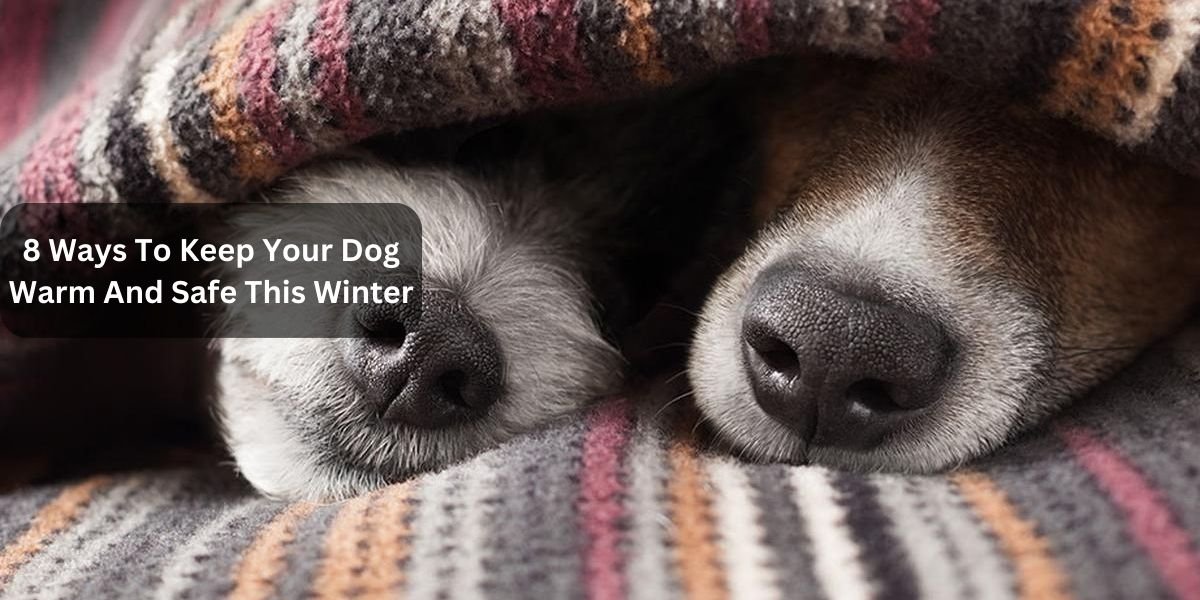Introduction:
As winter blankets the world in a chill, it’s essential to ensure your furry friend stays warm and safe during the colder months. Dogs, like humans, can be affected by the cold weather, and taking proactive measures is crucial for their well-being. In this guide, we’ll explore eight ways to keep your dog warm, cozy, and secure throughout the winter season.
Winter Wellness for Your Canine Companion
Winter care for your dog involves thoughtful considerations to protect them from the cold and potential hazards. Let’s dive into eight practical ways to keep your dog warm and safe during the winter.
Invest in a Cozy Bed and Shelter
Provide your dog with a warm and insulated bed to keep them off cold surfaces. If your dog spends time outdoors, ensure they have access to a shelter that shields them from wind, rain, and snow. A cozy shelter with proper insulation helps maintain their body heat.
Dress Your Dog in Winter Apparel
For dogs with short fur or those susceptible to the cold, consider dressing them in winter-appropriate clothing. Options include jackets, sweaters, and booties to protect their paws from ice, snow, and harsh chemicals used on roads and sidewalks.
Maintain a Regular Grooming Routine
Regular grooming is essential during winter. Keep your dog’s coat clean and well-brushed to remove any ice balls, salt, or chemicals that may accumulate during walks. Trim the fur between their paw pads to prevent ice buildup and discomfort.
Limit Outdoor Exposure in Extreme Cold
In extremely cold conditions, limit your dog’s time outdoors. Frostbite and hypothermia are real risks, especially for breeds not acclimated to cold weather. Shorten walks during frigid temperatures and pay attention to signs of discomfort, such as shivering.
Hydrate and Provide Warm Meals
Staying hydrated is crucial in winter, so ensure your dog has access to fresh and unfrozen water at all times. Additionally, feeding your dog warm meals can contribute to maintaining their body temperature. Consider incorporating nutrient-rich, warm foods into their diet.
Protect Paws from Cold and Salt
Winter walks often mean encounters with salt and de-icing chemicals. Protect your dog’s paws by applying pet-friendly paw balm or using booties. After walks, wipe their paws with a damp cloth to remove any residue that could be harmful if licked.
Create a Warm Indoor Space
Ensure your dog has a warm indoor space where they can retreat from the cold. Set up cozy blankets and provide a comfortable spot away from drafts. If you use a space heater, ensure it’s pet-safe and out of your dog’s reach.
Watch for Signs of Cold-Related Stress
Be attentive to signs that your dog may be experiencing cold-related stress. Shivering, whining, lethargy, and seeking warmth are indications that your dog needs attention. If you notice any concerning behaviors, consult with your veterinarian.
Conclusion:
Winter can be a magical time for dogs and their owners, but it requires extra care to ensure your furry friend stays warm and safe. By implementing these eight strategies, you’ll be better equipped to protect your dog from the winter chill and provide them with a cozy and comfortable season.
FAQs:
Q1: Can all dogs tolerate cold weather?
A1: While some dog breeds are better equipped to handle cold weather due to their fur coat and body structure, individual tolerance varies. Short-haired breeds, older dogs, and those with certain health conditions may be more susceptible to the cold. It’s crucial to monitor your dog’s comfort level and adjust care accordingly.
Q2: Are there specific signs of hypothermia in dogs?
A2: Signs of hypothermia in dogs include shivering, lethargy, weakness, muscle stiffness, and a slowed heart rate. In severe cases, a dog may experience difficulty breathing and loss of consciousness. If you suspect hypothermia, seek veterinary attention immediately.
Q3: How often should I check my dog’s paws during winter?
A3: Check your dog’s paws regularly, especially after walks, for signs of irritation, cracks, or injuries. Remove ice balls and salt residue, and consider using pet-friendly paw balm or booties to protect their paws.
Q4: Can I leave my dog in a car during winter?
A4: It’s not safe to leave your dog in a car during winter, as temperatures inside a car can drop quickly and lead to hypothermia. Additionally, a car can act like a refrigerator, trapping cold air and posing a significant risk to your dog’s well-being.
Q5: Is it necessary to adjust my dog’s diet during winter?
A5: Depending on your dog’s activity level and exposure to the cold, you may need to adjust their diet slightly. Dogs may burn more calories to stay warm, so providing nutrient-rich, warm meals can be beneficial. Consult with your veterinarian for personalized dietary recommendations based on your dog’s needs.



